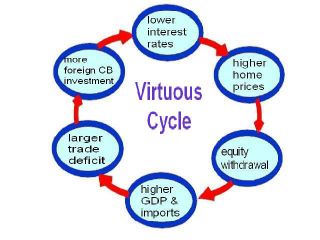"China Has Room to Cut Interest Rates on Low Inflation (Update2)
By Li Yanping
March 28 (Bloomberg) -- China has room to cut interest rates as consumer prices may end the year unchanged, the central bank said after inflation fell in February for the first time since 2002.
“The central bank still sees room for more rate cuts,” Zhang Jianhua, the research head of the People’s Bank of China, told an economic forum in Beijing today. “We haven’t yet cut rates because money market rates have dropped to quite low levels and banks have abundant liquidity.”
China’s consumer price index may stand at zero for 2009 and the nation may escape deflation because of “strong loan growth” and the government’s 4 trillion yuan ($585 billion) stimulus package to spark an economic recovery, Zhang said.
Plunging prices have increased the risk that deflation will become entrenched, prompting consumers to delay purchases, squeezing company margins and triggering wage cuts. Premier Wen Jiabao, who this month set a 4 percent inflation target for 2009, is relying on a surge in lending and the support measures to spark an economic recovery.
Wen said March 13 the nation’s 8 percent growth target for this year is “difficult but possible” to achieve. People’s Bank of China Governor Zhou Xiaochuan said this week that leading indicators are pointing to an economic recovery.
Second Quarter
“By mid-June, government leaders will have a better idea how well the stimulus package worked,” Jia Kang, head of the Institute of Fiscal Science under the Ministry of Finance, told reporters at today’s forum. “Growth in the second quarter will be key for further policy moves, and if recovery is not seen the government is likely to roll out more stimulus.”
Wen said this month at the closing of the national congress that the government has “adequate ammunition” to add to its 4 trillion yuan stimulus package at any time.
“Economic indicators may look ugly this quarter because of the high comparative basis last year,” Jia said.
Inventories at local companies have started to fall and stockpiles may need replenishing in the second quarter, the central bank’s Zhang said. “An increase in inventories will provide concrete proof industrial production and the economy are recovering,” he said.
China’s economy in the fourth quarter grew 6.8 percent from the same period a year earlier, lagging the 9 percent expansion for all of 2008 and 13 percent for 2007. Industrial output growth slowed, forcing thousands of factories to close and leaving about 20 million migrant workers jobless.
Domestic Demand
“The rest of the year will be a struggle between coping with falling external demand and stimulating local consumption,” Zhang Yansheng, a researcher with the National Development and Reform Commission, said today. “Whether the government can achieve its 8 percent growth target hinges on domestic demand.”
Gross domestic product’s growth will gradually recover to 8 percent or more this year after touching a low of about 6 percent this quarter, Zhang Liqun, a researcher at the State Council Development and Research Center, said at a separate conference.
The government’s stimulus measures may add 2 percentage points to growth and may help make up for the loss caused by the drop in exports, Zhang said. Car sales may continue to rise for the rest of 2009 and property transactions may grow, Zhang said. These private investments will add to the government stimulus package and help bolster growth, he said.
Loan Growth
China’s new local-currency loans more than quadrupled from a year earlier in February to 1.07 trillion yuan, the central bank said on its Web site March 12, after it cut borrowing costs five times last year, scrapped quotas limiting lending and urged support for the stimulus plan.
Vehicle sales rose 25 percent in February and urban fixed- asset investment jumped 26.5 percent in the first two months from a year earlier.
Lending continued to rise in March and the growth “isn’t that much smaller” than in previous months, the central bank’s Zhang said, without giving a number. “We are likely to see sustained loan growth for the rest of the year.” The stimulus package is showing some results, he added.
Falling Exports
Zhang at the reform commission, China’s top policy maker, said the country’s exports may fall 10 percent this year while imports may drop 5 percent. China’s trade surplus may shrink $200 billion this year, compared with a gap of $295.5 billion in 2008, he said.
The World Bank cut its forecast for China’s growth this year to 6.5 percent from 7.5 percent previously. The Organization for Economic Cooperation and Development said it will reduce its estimate this month to between 6 percent and 7 percent as the global slump deepens. The International Monetary Fund sees a 6.7 percent expansion, the least since 1990."







































